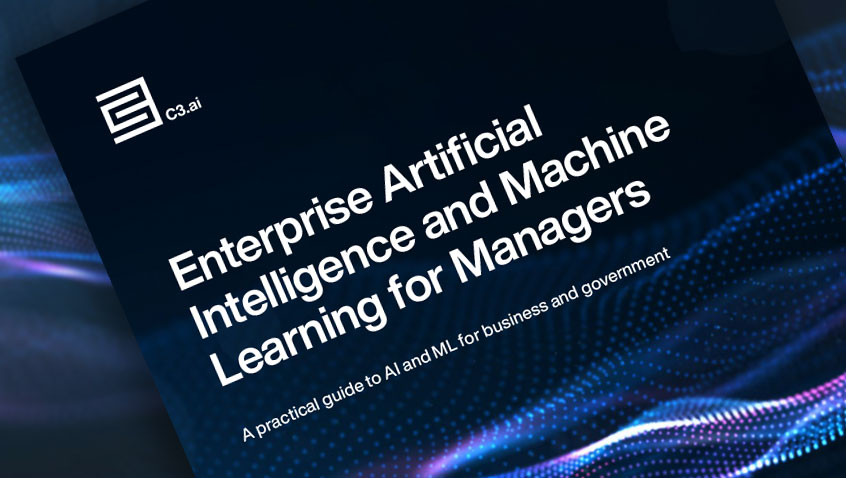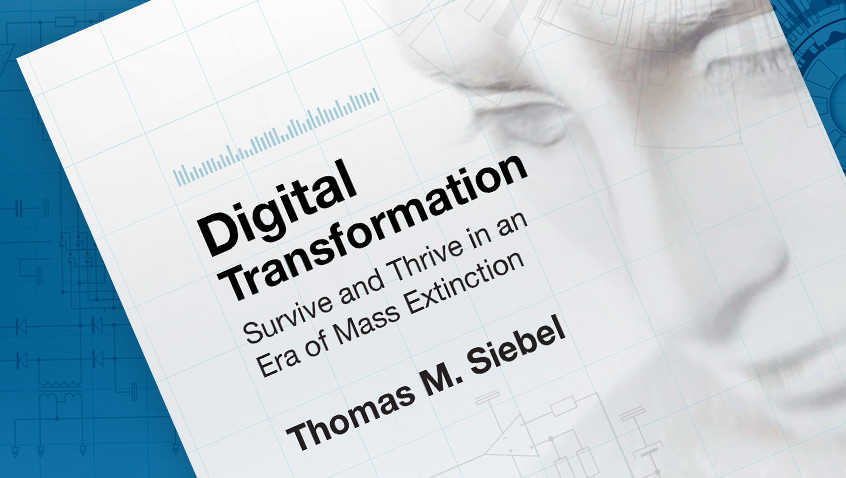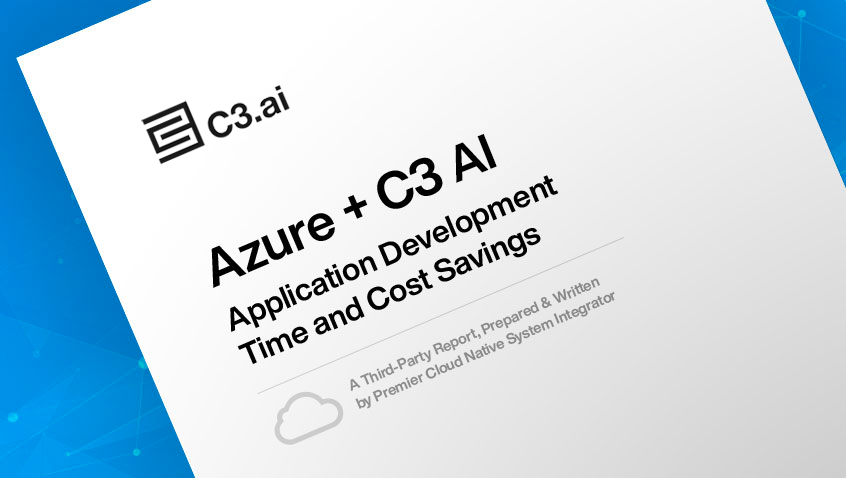- AI Software
- C3 AI Applications
- C3 AI Applications Overview
- C3 AI Anti-Money Laundering
- C3 AI Cash Management
- C3 AI Contested Logistics
- C3 AI CRM
- C3 AI Decision Advantage
- C3 AI Demand Forecasting
- C3 AI Energy Management
- C3 AI ESG
- C3 AI Health
- C3 AI Intelligence Analysis
- C3 AI Inventory Optimization
- C3 AI Process Optimization
- C3 AI Production Schedule Optimization
- C3 AI Property Appraisal
- C3 AI Readiness
- C3 AI Reliability
- C3 AI Smart Lending
- C3 AI Supply Network Risk
- C3 AI Turnaround Optimization
- C3 Generative AI Constituent Services
- C3 Law Enforcement
- C3 Agentic AI Platform
- C3 Generative AI
- Get Started with a C3 AI Pilot
- Industries
- Customers
- Events
- Resources
- Generative AI for Business
- Generative AI for Business
- C3 Generative AI: How Is It Unique?
- Reimagining the Enterprise with AI
- What To Consider When Using Generative AI
- Why Generative AI Is ‘Like the Internet Circa 1996’
- Can the Generative AI Hallucination Problem be Overcome?
- Transforming Healthcare Operations with Generative AI
- Data Avalanche to Strategic Advantage: Generative AI in Supply Chains
- Supply Chains for a Dangerous World: ‘Flexible, Resilient, Powered by AI’
- LLMs Pose Major Security Risks, Serving As ‘Attack Vectors’
- What Is Enterprise AI?
- Machine Learning
- Introduction
- What is Machine Learning?
- Tuning a Machine Learning Model
- Evaluating Model Performance
- Runtimes and Compute Requirements
- Selecting the Right AI/ML Problems
- Best Practices in Prototyping
- Best Practices in Ongoing Operations
- Building a Strong Team
- About the Author
- References
- Download eBook
- All Resources
- Publications
- Customer Viewpoints
- Blog
- Glossary
- Developer Portal
- Generative AI for Business
- News
- Company
- Contact Us
Glossary
- Artificial Intelligence
- AI Agents
- AI in Finance
- AI in Manufacturing
- Anomaly Detection
- Anti-Money Laundering
- Asset Performance Management
- Asset Reliability
- Demand Forecasting
- Digital Disruption
- Digital Transformation
- Digital Twin
- Elastic Cloud Computing
- Energy Management
- Enterprise AI
- Enterprise AI Platform
- Ethical AI
- Inventory Planning
- IoT Platform
- Know Your Customer (KYC)
- Machine Vision (Computer Vision)
- Model-Driven Architecture
- Multi-Cloud
- No Code
- Predictive Analytics
- Predictive Maintenance
- Process Optimization
- Production Scheduling
- Stochastic Optimization
- Supply Chain Management
- Type System
- Data Unification & Management
- Machine Learning (A to L)
- Artificial General Intelligence
- Bias
- Canonical Schema
- Canonical Transform
- Classification
- Classifier
- Classifier Performance
- Clustering
- Coefficient of Discrimination, R-Squared (R2)
- Convolutional Neural Network (CNN)
- Correlation
- Data Cleansing
- Data Labels
- Data Lineage
- Deep Learning
- Dimensionality Reduction
- Explainable AI
- F1 Score
- False Positive Rate
- Feature Engineering
- Feedback Loop
- Field Validation
- Gaussian Mixture Model (GMM)
- Generalized Linear Models
- Gradient-Boosted Decision Trees (GBDT)
- Features
- Ground Truth
- Holdout Data
- Hyperparameters
- Information Leakage
- LIME: Local Interpretable Model-Agnostic Explanations
- Linear Regression
- Loss Function
- Low-Dimensional Representation
- Machine Learning (M to Z)
- Mean Absolute Error
- Mean Absolute Percent Error
- Machine Learning Pipeline
- Model Drift
- Model Prototyping
- Model Training
- Model Validation
- Normalization
- Overfitting
- Precision
- Problem Tractability
- Random Forest
- Recall
- Receiver Operating Characteristic (ROC) Curve
- Regression Performance
- Regularization
- Reinforcement Learning
- Reporting Bias
- Ridge Regression
- Root Mean Square Error (RMSE)
- Selection Bias
- Shapley Values
- Supervised Machine Learning
- Tree-Based Models
- Underfitting
- Unsupervised Machine Learning
- XGBoost
Multi-Cloud
What is Multi-Cloud?
Multi-Cloud refers to the ability of a software application to run on different cloud infrastructures (e.g., AWS, Azure, private cloud) without having to rewrite application code. The benefits of multi-cloud capability include significantly reduced development and maintenance costs, as well as increased business flexibility and resilience. Multi-cloud capability also allows organizations to more effectively future-proof their enterprise AI applications by giving them the freedom to easily move from one cloud provider to another.
An enterprise AI platform must support multi-cloud operation. For example, the platform should be able to operate on AWS and invoke Google Translate or speech recognition services and access data stored on a private cloud. It should also be possible for an instance of the platform to be deployed in-country – for example, on Azure Stack – so that it conforms to data sovereignty regulations. The platform must also support installation in a customer’s virtual private cloud account (e.g., Azure or AWS account) and support deployment in specialized clouds such as AWS GovCloud or C2S with industry- or government-specific security certifications.
Why is Multi-Cloud Important?
Enterprise AI applications are generally designed to run on cloud infrastructure, whether a private cloud or, more frequently, a public cloud such as AWS, Azure, Google, or IBM, to take advantage of the vast, low-cost storage and compute resources available from these providers. Cloud vendors are innovating at a furious pace and are competing aggressively on price and features. Organizations therefore want and need the ability to run their enterprise AI applications in the cloud of their choice, and to easily switch cloud providers or swap out specific microservices from one provider for those from another.
Without multi-cloud capability, organizations lose the flexibility to easily and affordably change cloud providers or to leverage innovations from different cloud vendors as they become available. If an AI application does not support multi-cloud operation, it would have to be almost entirely rewritten to be ported from one cloud service to another, at significant cost, time, and complexity.
How C3 AI Enables Multi-Cloud Enterprise AI Applications
Multi-cloud capability optimally is achieved through a model-driven architecture. That is at the heart of the C3 AI® Platform – a complete, end-to-end platform for designing, developing, deploying, and operating enterprise AI applications at industrial scale. C3 AI’s revolutionary model-driven architecture provides an abstraction layer that enables the underlying cloud services used by an application to be declaratively configured in metadata, rather than explicitly hard-coded within the application. This means that enterprise AI applications developed on the C3 AI Platform – including all of C3 AI’s prebuilt SaaS applications – are multi-cloud-enabled out of the box.
Applications developed with the C3 AI Platform can run on any of the leading cloud infrastructures (for example AWS or Azure) or on private cloud infrastructure without having to rewrite the application code. This capability gives organizations maximum flexibility in choosing cloud service providers, and the ability to shift from one cloud to another without prohibitive costs or impact on application performance.



